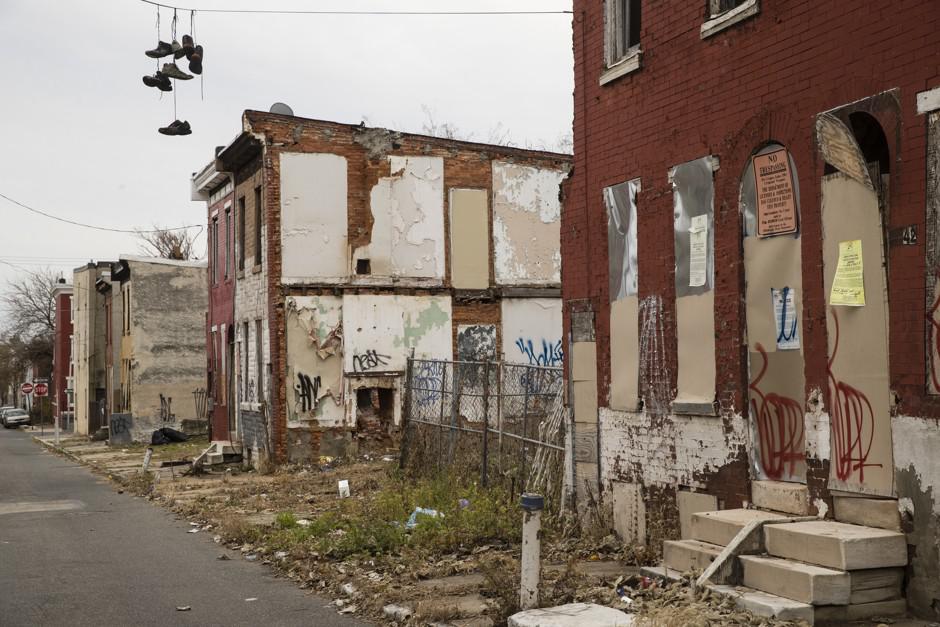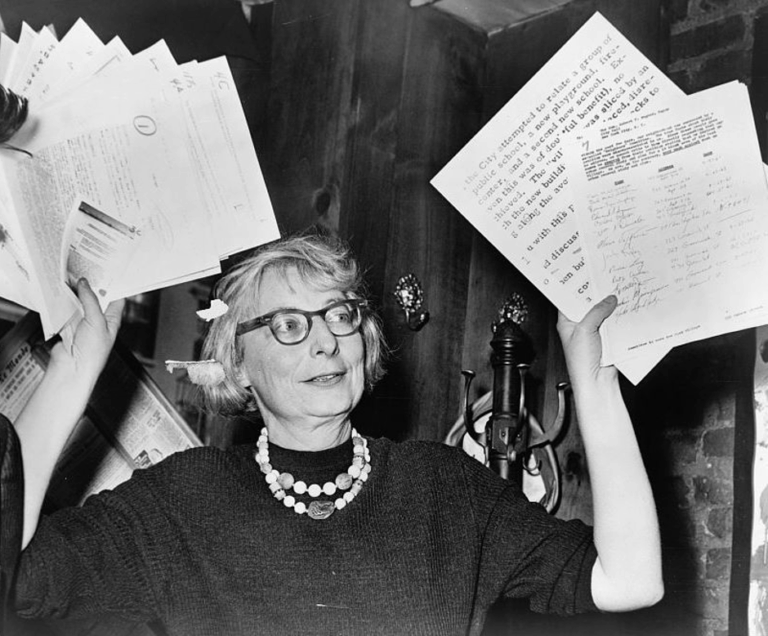Physical Address
304 North Cardinal St.
Dorchester Center, MA 02124
Physical Address
304 North Cardinal St.
Dorchester Center, MA 02124

Is it even possible today to write a vigorous argument in favor of the urban renewal policies of the 1950s? I doubt it. Jeanne Lowe's 1967 "Cities in a Race with Time* is a sympathetic account of the urban renewal era in its own terms. How does it hold up?

Jane Jacobs’ The Death and Life of Great American Cities, published in 1961, revolutionised urban theory. This essay kicks off a series exploring Jacobs’ influential ideas and their potential to address today’s urban challenges and enhance city living. Adam Louis Sebastian Lehodey, the author of this collection of essays, studies philosophy and economics on the dual degree between Columbia University and SciencesPo Paris. Having grown up between London and Paris, he is energised by the questions of urban economics, the role of the metropolis in the global economy, urban governance and cities as spontaneous order. He works as an Applied Research Intern at the Mercatus Center. Since man is a political animal, and an intensely social existence is a necessary condition for his flourishing, then it follows that the city is the best form of spatial organisation. In the city arises a form of synergy, the whole being greater than the sum of its parts, for the remarkable thing about cities is that they tap into the brimming potential of every human being. In nowhere but the city can one find such a variety of human ingenuity, cooperation, culture and ideas. The challenge for cities is that they operate on their own logic. Cities are one of the best illustrations of spontaneous order. The city in history did not emerge as the result of a rational plan; rather, what the city represents is the physical manifestation of millions of individuals making decisions about where to locate their homes, carry out economic transactions, and form intricate social webs. This reality is difficult to reconcile with our modern preference for scientific positivism and rationalism. But for the Polis to flourish, it must be properly understood by the countless planners, reformers, politicians and the larger body of citizens inhabiting the space. Enter Jane […]
1. “Gen Y/Millennials” want density. Ha! Sucks for them. 2. Mini-bleg: Does anyone know what “building regulations” are preventing this proposed Jackson Heights building from having windows on one side? 3. Southwest DC, before and after highways/urban renewal, in pictures. 4. Overplanning in China. 5. Palm Beach County wants to allow private developers to build along West Palm Beach’s train line and bus stops, but Mayor Lois Frankel wants a sports stadium. 6. St. Louis got money from Obama’s stimulus to hire consulting firms to upzone the city’s dense neighborhoods.
I’ve been swamped in my day job, but want to share the following: The blog, Agents of Urbanism recently gave praise to Market Urbanism. Thanks Matthew! Please check out Agents of Urbanism and Life Without Buildings, who followed up on Agent of Urbanism’s praise. I enjoy both blogs. Carl Close wrote How “Urban Renewal” Destroyed San Francisco’s Fillmore District for The Independent Institute’s blog, The Beacon. And finally, I came across some fantastic lectures at the Foundation for Economic Education, by Sandy Ikeda. I highly recommend listening to the MP3s during your free time this weekend. He discusses Jane Jacobs, urbanism, history, sprawl, economics, and most things of interest to readers of Market Urbanism: Urban Planning Private Cities
photo by flickr user mandus I recently came across a great blog, Hyde Park Urbanist, which focuses on urbanism in the Hyde Park neighborhood of Chicago. Hyde Park is located along Lake Michigan on the South Side and is the home of The University of Chicago as well as Frank LLoyd Wright’s famous Robie House and Chicago’s Museum of Science and Industry. A recent article discusses how the area originally grew unhampered by zoning, with streets lined with businesses and shops. Then, urban renewal schemes disrupted the natural patterns of living. Presently, planners are seeing the folly of past ambitions. Unfortunately, we have to keep our eyes on the planners as they test out newfangled schemes for future generations to untangle. Hyde Park Urbanist – Before Zoning: this post is about what happened before zoning began to shape Hyde Park’s urban landscape. “urban renewal”, when the commercial heart of Hyde Park was suddenly ripped out. Planning in the late 1950s was primarily about separating residential, commercial and industrial districts. A couple generations later, most planners believe that residential and commercial uses can be combined along one block. That’s a lesson in itself. Half of today’s planning notions will look terribly wrong 50 years from today; we just don’t know which half. The commercial building patterns that Rossi describes occurred before zoning became mildly effective in the late 1920s. Those patterns can be seen as natural, in the sense that they were a response to the marketplace rather than the result of government fiat. (emphasis mine) I recommend checking out the Hyde Park Urbanist’s blog, especially for you Chicagoans…